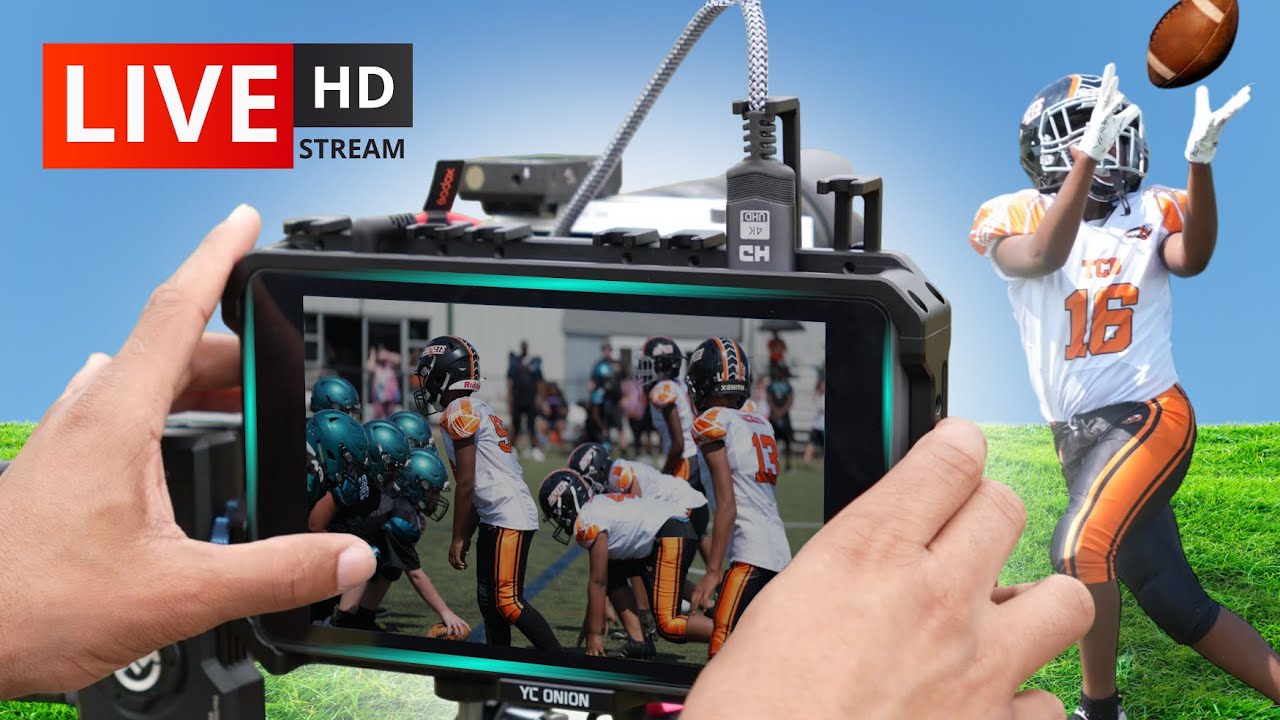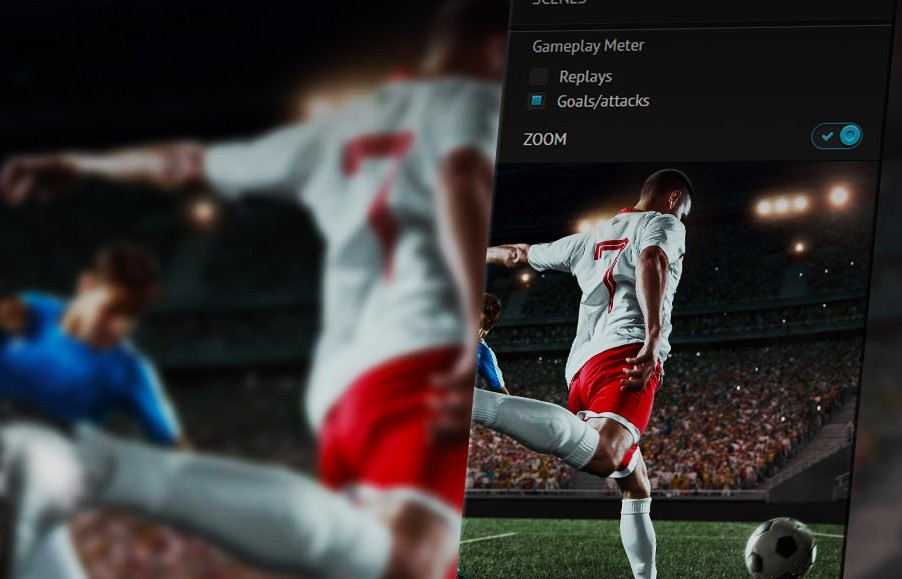Live sports production is a dynamic and challenging field that requires meticulous planning, coordination, and execution. As the demand for high-quality sports broadcasts continues to grow, producers must develop workflows that ensure seamless, engaging, and professional live broadcasts. This article explores the various elements involved in building a successful live sports production workflow, from planning and equipment selection to real-time execution and post-production.
1. The Importance of Live Sports Production
1.1 Enhancing Viewer Experience
High-quality live sports production enhances the viewer's experience by providing clear visuals, crisp audio, and seamless transitions. Engaging commentary and real-time graphics keep the audience informed and entertained, making them feel a part of the event.
1.2 Meeting Industry Standards
Adhering to industry standards ensures consistency and professionalism in live broadcasts. Standards for video resolution, audio quality, and streaming protocols must be met to deliver a superior viewing experience.
1.3 Driving Revenue and Engagement
Live sports production drives revenue through advertisements, sponsorships, and pay-per-view models. Engaging broadcasts increase viewership and fan engagement, leading to higher revenue opportunities for broadcasters and sports organizations.
2. Pre-Production Planning
2.1 Understanding the Scope of the Event
Thoroughly understanding the scope of the event is crucial. This includes knowing the type of sport, the size of the venue, the number of cameras needed, and the duration of the event.
2.2 Assembling the Production Team
A skilled production team is essential for a successful live sports broadcast. This team typically includes a director, camera operators, sound engineers, technical directors, and graphics operators.
2.3 Budgeting and Resource Allocation
Budgeting involves allocating resources efficiently to cover equipment, personnel, and other logistical needs. A well-planned budget ensures that all necessary components are accounted for without overspending.
2.4 Creating a Detailed Production Plan
A detailed production plan outlines the schedule, equipment setup, camera placements, and contingency plans. This plan serves as a blueprint for the entire production process, ensuring that all team members are on the same page.

3. Equipment and Technology
3.1 Camera Selection and Placement
Choosing the right cameras and strategically placing them around the venue is vital for capturing the action from multiple angles. Factors such as zoom capabilities, frame rates, and low-light performance must be considered.
3.2 Audio Equipment and Configuration
Clear and high-quality audio is just as important as video. Selecting the right microphones, mixers, and audio interfaces ensures that the commentary, ambient sounds, and crowd noise are captured accurately.
3.3 Lighting and Its Impact
Proper lighting enhances the visual quality of the broadcast. Depending on the venue and time of the event, additional lighting may be required to ensure that the footage is well-lit and free of shadows.
3.4 Broadcast and Streaming Technology
Reliable broadcast and streaming technology is essential for live sports production. This includes encoders, decoders, and streaming platforms that can handle high-definition video and audio with minimal latency.
4. Technical Specifications
4.1 Video Resolution and Frame Rates
Choosing the appropriate video resolution and frame rates is crucial for delivering high-quality broadcasts. Common standards include 1080p at 60fps and 4K at 30fps, depending on the capabilities of the equipment and the platform.
4.2 Audio Quality Standards
Maintaining high audio quality involves using professional-grade microphones and mixers, as well as ensuring proper synchronization with the video. Audio compression standards like AAC and Dolby Digital are commonly used.
4.3 Network Requirements for Live Streaming
A stable and high-bandwidth network connection is essential for live streaming. This ensures that the video and audio signals are transmitted smoothly without buffering or interruptions.
5. Production Workflow
5.1 Signal Flow and Routing
Understanding signal flow and routing is key to managing the various audio and video feeds. This involves using switchers, routers, and distribution amplifiers to direct the signals to the appropriate destinations.
5.2 Real-Time Monitoring and Quality Control
Continuous monitoring and quality control during the broadcast help identify and address any issues immediately. This includes checking for audio sync, video quality, and signal integrity.
5.3 Managing Graphics and Overlays
Graphics and overlays provide real-time information such as scores, statistics, and player profiles. Managing these elements requires specialized software and a dedicated operator.
5.4 Instant Replay and Highlights
Instant replays and highlights enhance the viewer experience by showcasing key moments. This involves using replay systems that can quickly access and playback footage from multiple angles.
6. Roles and Responsibilities
6.1 Director
The director oversees the entire production, making real-time decisions on camera angles, transitions, and other visual elements.
6.2 Camera Operators
Camera operators are responsible for capturing the action from various angles. They must be skilled in following the game and anticipating key moments.
6.3 Sound Engineers
Sound engineers ensure that all audio elements are balanced and of high quality. They manage microphones, mixers, and audio feeds to deliver clear and immersive sound.
6.4 Technical Director
The technical director manages the technical aspects of the broadcast, including signal routing, switchers, and monitoring equipment.
6.5 Graphics Operator
The graphics operator handles the real-time graphics and overlays, ensuring that they are accurate and timely.
6.6 Replay Operator
The replay operator manages the instant replay system, selecting and queuing up key moments for playback.
7. Real-Time Coordination
7.1 Communication Protocols
Effective communication protocols are essential for coordinating the production team. This includes using intercom systems and clear signaling methods.
7.2 Timing and Pacing
Maintaining proper timing and pacing ensures that the broadcast flows smoothly and keeps the audience engaged.
7.3 Adapting to Live Changes
Live sports events are unpredictable, requiring the production team to adapt quickly to changes and unexpected developments.

8. Post-Production
8.1 Editing and Compiling Footage
Post-production involves editing and compiling footage to create highlights, recaps, and other content. This requires professional editing software and skilled editors.
8.2 Audio Mixing and Mastering
Audio mixing and mastering ensure that the final product has clear and balanced sound. This includes adjusting levels, adding effects
, and ensuring synchronization with the video.
8.3 Graphics and Visual Effects
Adding graphics and visual effects in post-production enhances the final product. This can include animated intros, transitions, and other visual elements.
8.4 Distribution and Archiving
Distributing and archiving the final product ensures that it reaches the intended audience and is preserved for future use. This includes uploading to platforms, creating physical copies, and maintaining digital archives.
9. Challenges and Solutions
9.1 Technical Issues
Technical issues such as equipment failures and signal disruptions can occur. Having backup equipment and contingency plans in place helps mitigate these risks.
9.2 Environmental Factors
Environmental factors such as weather conditions and lighting can impact the broadcast. Preparing for these factors and having adaptable equipment is essential.
9.3 Coordination and Communication Breakdown
Breakdowns in coordination and communication can disrupt the production. Clear protocols and regular rehearsals help ensure smooth operation.
9.4 Audience Engagement
Keeping the audience engaged requires high-quality production and interactive elements. This includes real-time graphics, instant replays, and engaging commentary.
10. Future Trends in Live Sports Production
10.1 Virtual Reality and Augmented Reality
Virtual reality (VR) and augmented reality (AR) are transforming live sports production by offering immersive viewing experiences and enhanced graphics.
10.2 AI and Automation
AI and automation are improving efficiency in live sports production, from camera tracking to real-time analytics and content generation.
10.3 Enhanced Viewer Interaction
Enhanced viewer interaction through social media integration and interactive features is becoming increasingly important for engaging audiences.
10.4 Sustainability and Eco-Friendly Practices
Sustainability and eco-friendly practices are becoming a priority in live sports production, with a focus on reducing carbon footprints and using renewable energy sources.
11. Conclusion
11.1 Recap of Key Points
Building a successful live sports production workflow involves meticulous planning, the right equipment, skilled personnel, and effective real-time coordination.
11.2 Future Prospects
The future of live sports production is promising, with advancements in technology and increased viewer engagement driving innovation.
11.3 Call to Action for Further Learning
For those interested in pursuing a career in live sports production, continuous learning and staying updated with industry trends is essential.





